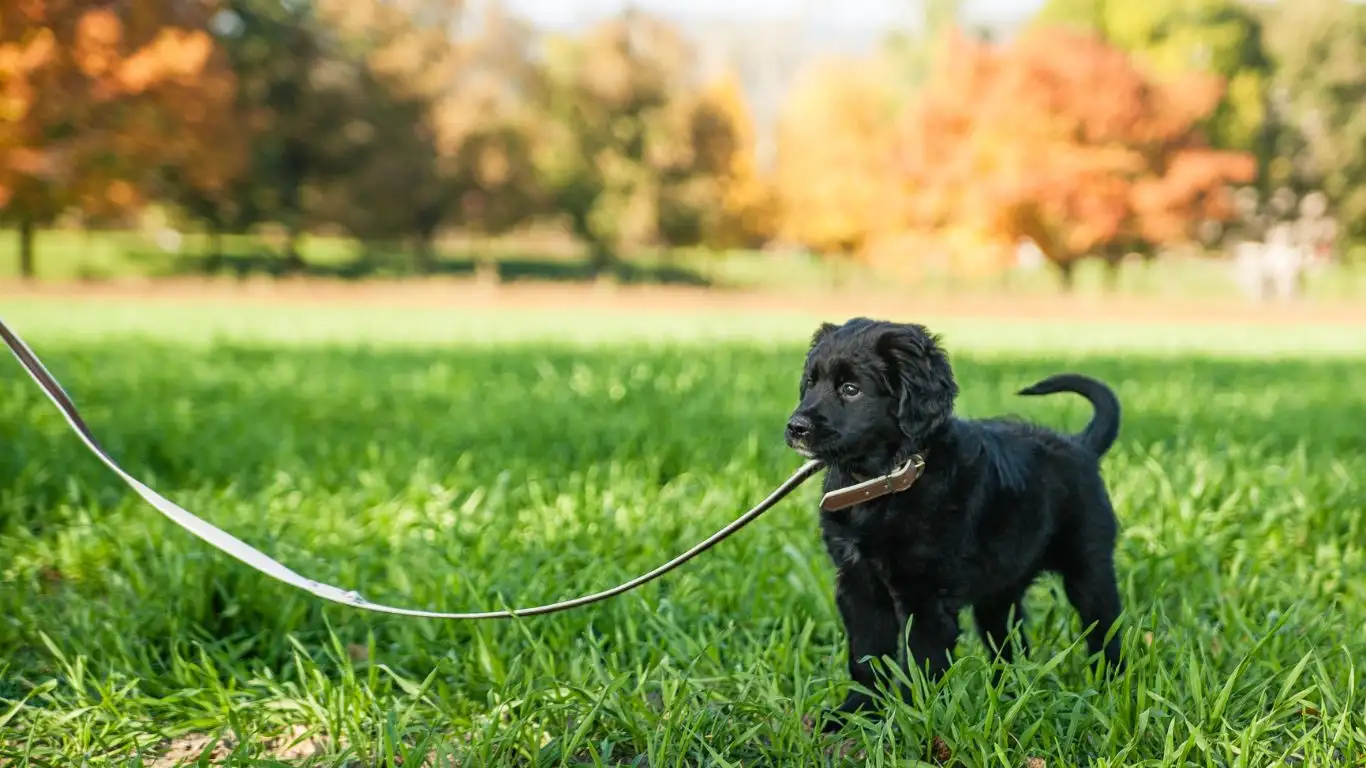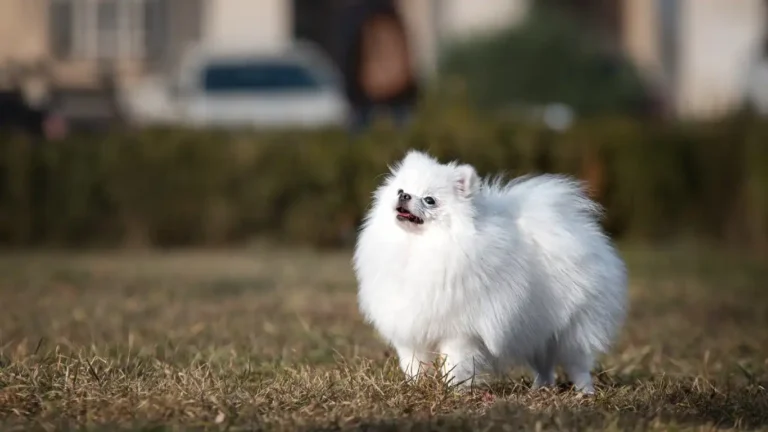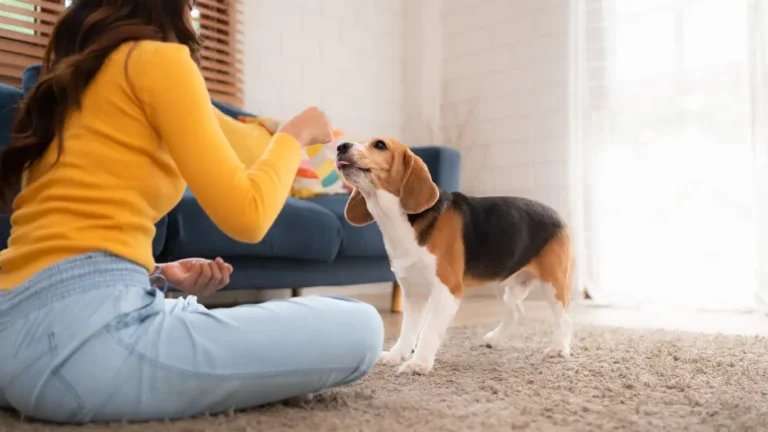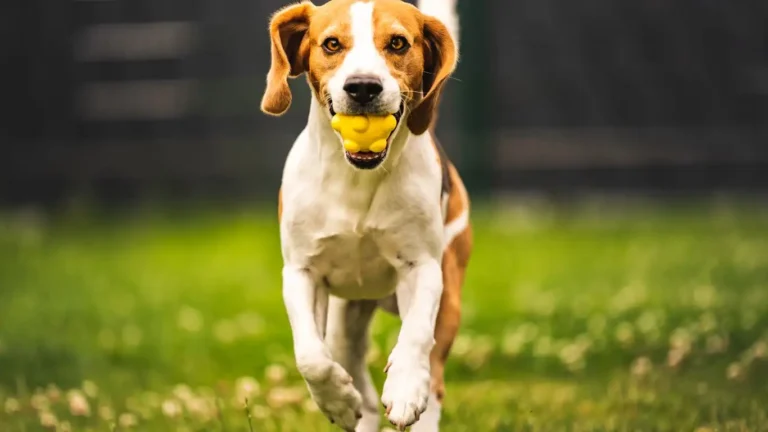How to Train a Dog to Stop Following You Around Effectively
If you’re wondering how to train a dog to stop following people around, you’re not alone. As a Canine-Assisted Therapy Trainer, I’ve worked with many dog owners who face the challenge of their furry friends constantly tailing them. It’s not just about having a dog that gives you personal space; it’s about fostering a healthy relationship where your dog feels secure and confident on their own. A dog following you around is a sign of attachment, but when it becomes excessive, it can lead to behavioral problems. In this guide, I’m going to share some tried-and-true strategies to help your dog feel more independent, while also reinforcing positive behaviors. So, let’s dive in!
Understanding Why Your Dog Follows You Everywhere
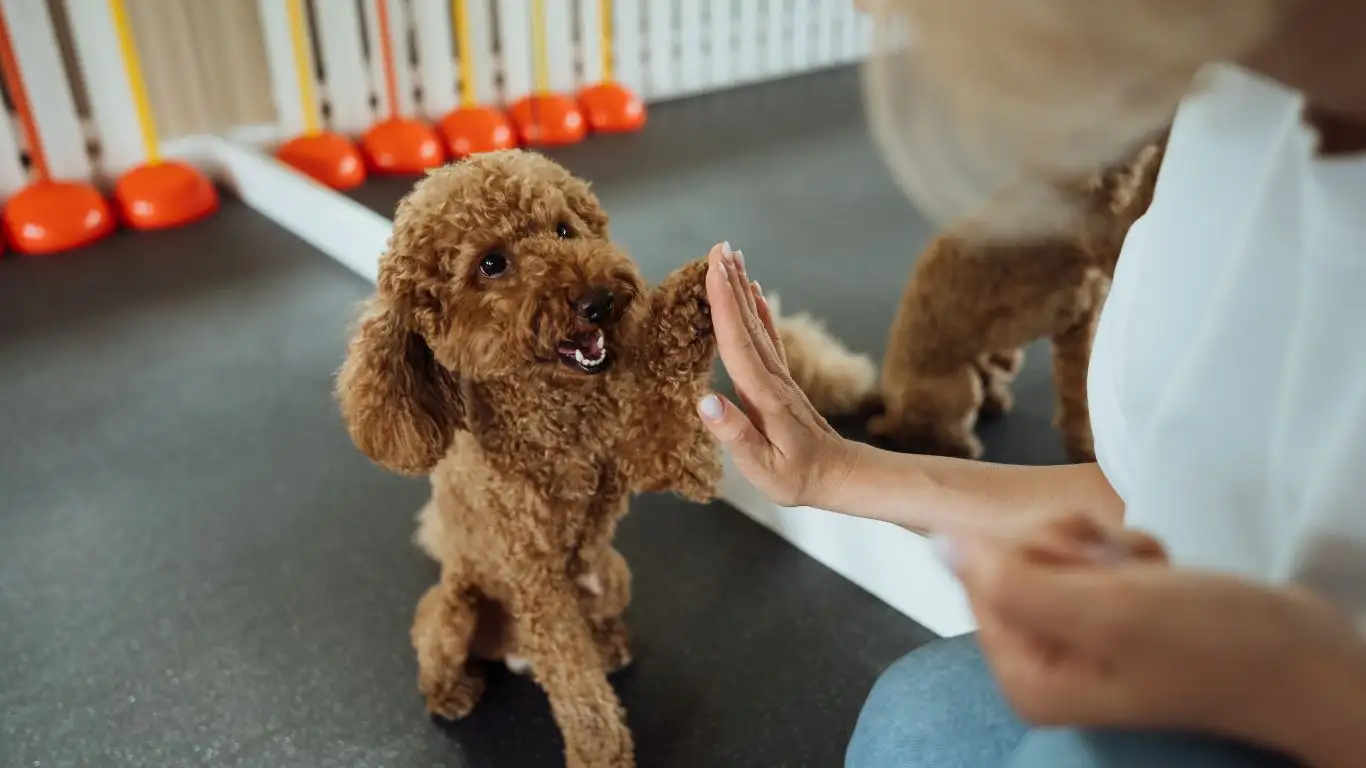
Before jumping into the “how,” it’s important to understand the “why.” Dogs are social creatures, and their strong bond with us is often a major factor in why they follow us around. Some dogs are just naturally more clingy than others, but that doesn’t mean it’s something they should never outgrow.
There are a few different reasons why your dog might follow you wherever you go. These include:
- Bonding and attachment: Dogs often follow their owners because of the strong bond they share. This behavior can be especially noticeable in puppies who are still learning to trust and form attachments.
- Separation anxiety: If your dog becomes overly anxious when left alone, following you around might be a coping mechanism. Separation anxiety can manifest in different ways, including excessive vocalization, destruction, or attempts to be near you at all times.
- Curiosity and attention-seeking: Sometimes, your dog simply wants to know what you’re doing. After all, you’re their favorite human, and they want to be part of whatever you’re up to!
- Reinforced behavior: If you’ve ever given your dog a treat or affection when they follow you around, it could have unintentionally reinforced the behavior. Dogs quickly learn that following you might lead to a reward.
What Happens If You Don’t Address This Behavior?
While it might seem cute at first, allowing your dog to follow you around constantly can lead to some unintended consequences. A dog that is overly reliant on its owner may experience separation anxiety when left alone. This could lead to destructive behaviors like chewing furniture, whining, or even attempting to escape when you’re not home. Additionally, it can be emotionally draining for you as a pet owner, leaving you feeling like you have little personal space in your own home.
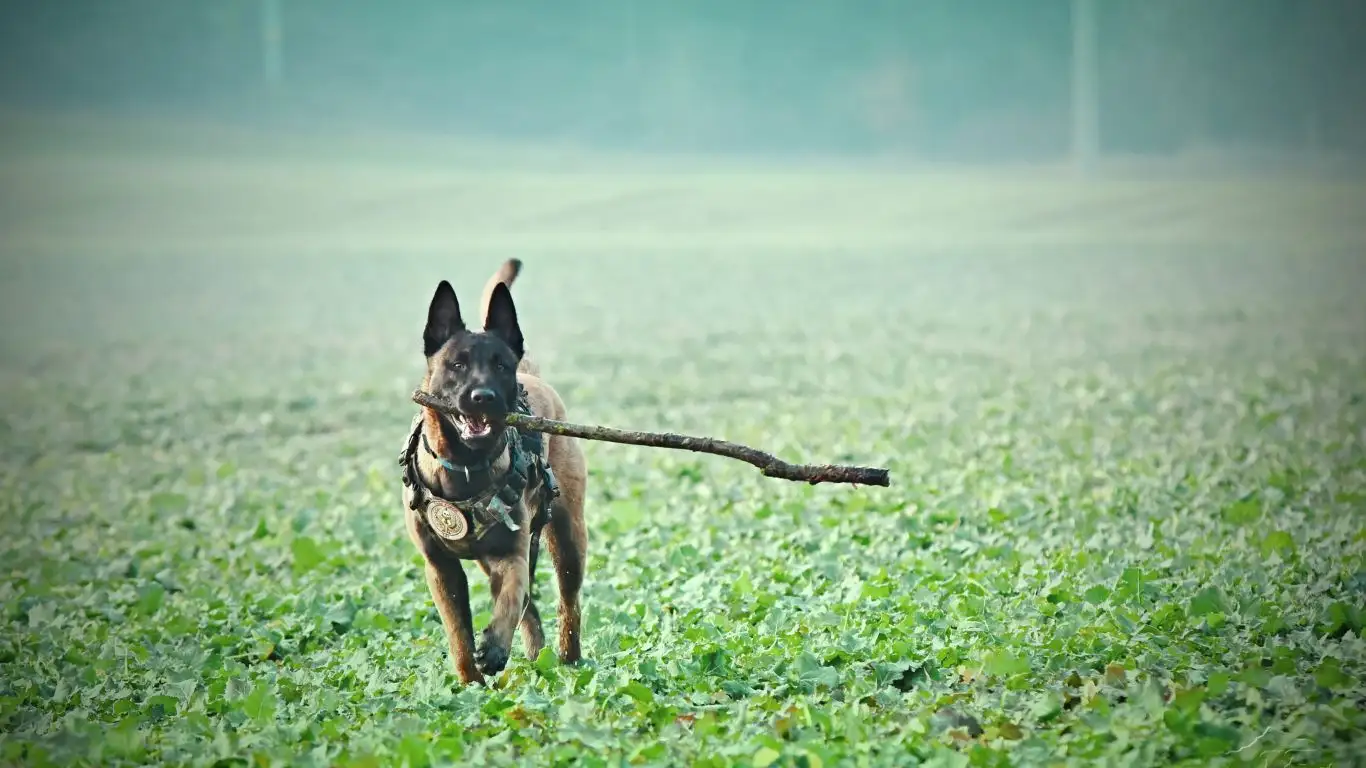
For example, I had a client named Sarah who was a bit overwhelmed by her golden retriever, Max. Max would follow her everywhere – from room to room, into the bathroom, and even when she tried to work at her desk. Sarah loved Max, but she started to feel like she couldn’t even get a moment of peace. The situation escalated to the point where Max would whine and bark when Sarah wasn’t in the same room as him. This made it harder for her to leave the house for even short errands without feeling guilty. Fortunately, with the right approach, Sarah was able to reclaim some space and teach Max how to be more independent.
How to Train a Dog to Stop Following You Around
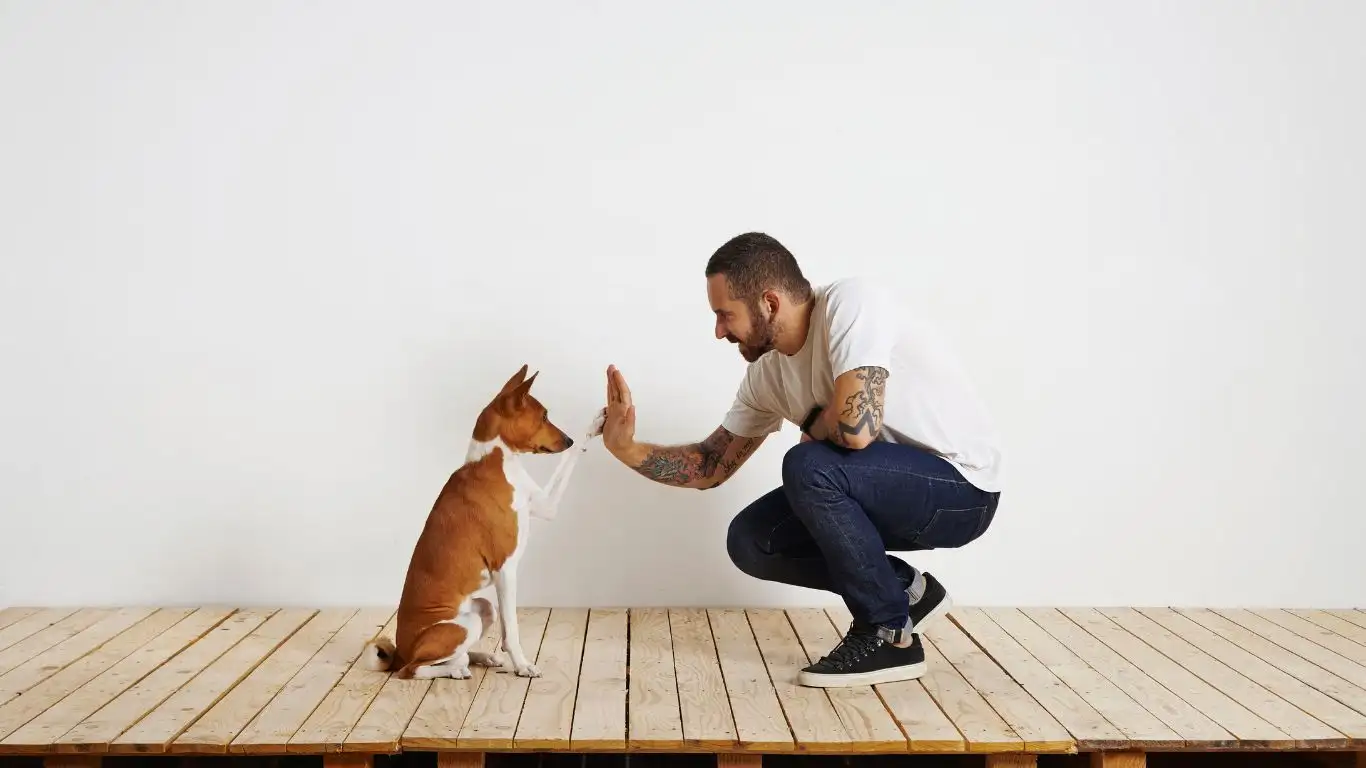
Now that we know why dogs tend to follow us, let’s focus on how to stop this behavior. Keep in mind that consistency is key when training your dog. You’ll need to be patient, but the rewards are well worth the effort. Let’s go through some proven techniques that will help you train your dog to stop following you around all the time.
1. Teach Your Dog to Be Comfortable With Alone Time
The first step in curbing the “shadow” behavior is to teach your dog that being alone doesn’t mean something bad will happen. Start by gradually increasing the amount of time your dog spends in another room while you’re at home. This can be done through simple exercises like closing the door while you’re in another room and giving your dog a comfortable space with their favorite toys or a treat. Don’t make a big deal out of leaving or entering the room; just go about your business as usual.
Over time, your dog will learn that it’s okay to be alone and that you will always return. This creates a sense of security for them, which reduces their anxiety about being apart from you. If they begin to follow you again, redirect their attention to something else, such as a toy or treat, to distract them and reinforce the idea that independence is okay.
2. Use Positive Reinforcement for Desired Behavior
Just like Max learned to follow Sarah for attention, your dog will be motivated by rewards. To change their behavior, you need to use positive reinforcement when they stay in a room or area without following you. Whenever your dog stays in one spot or spends time alone, reward them with a treat, praise, or a favorite toy. This lets them know that staying put is just as rewarding as following you around.
Remember, it’s important not to give your dog attention when they follow you. If you do, you might accidentally reinforce the very behavior you’re trying to stop. Be patient and consistent – the goal is to teach them that staying put leads to positive experiences, just like following you used to.
3. Practice “Stay” and “Go to Your Spot” Commands
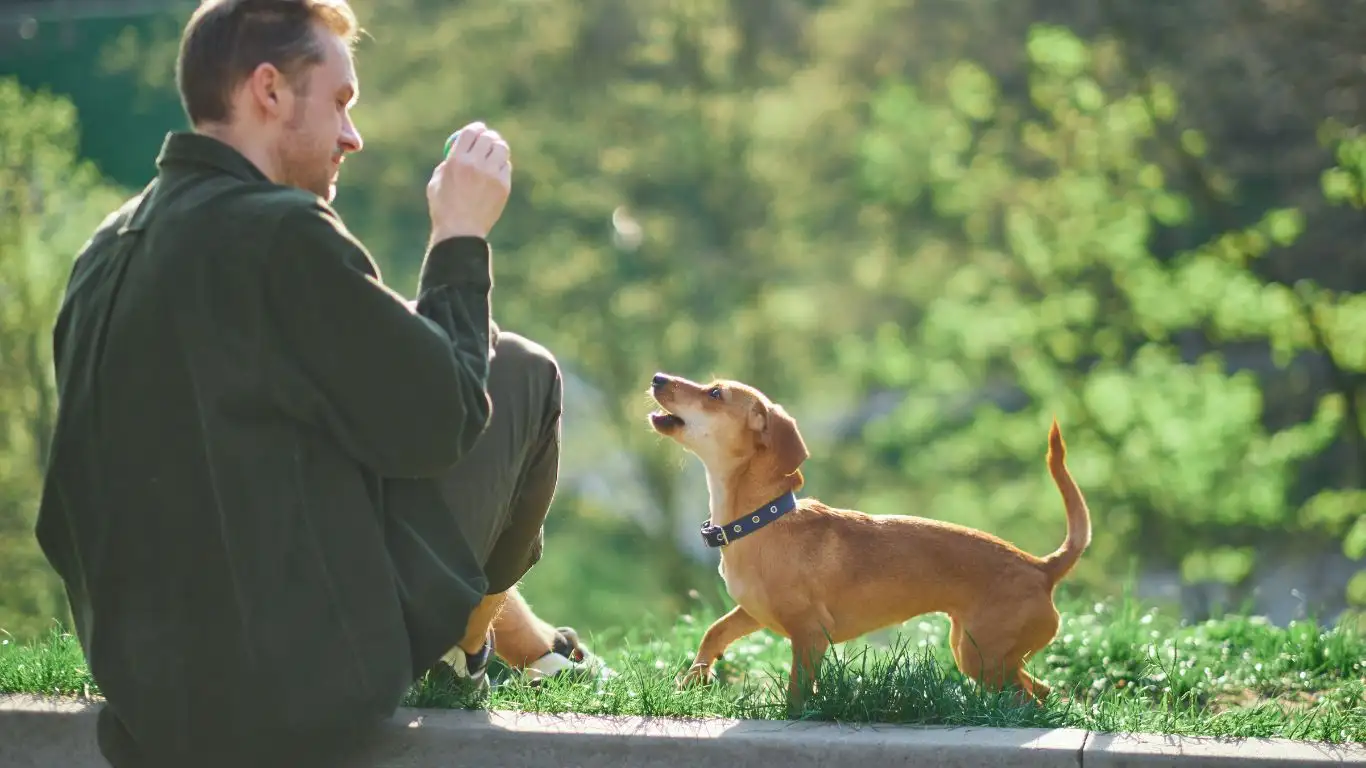
One of the best ways to help your dog stop following you everywhere is by teaching them clear commands that reinforce staying in one place. I’ve had great success using the “Stay” command, as well as the “Go to your spot” command. These two can really make a difference in helping your dog understand where they should be and that it’s okay to be in their own space without constantly needing to follow you.
Here’s how you can practice these commands:
- Stay: Start by having your dog sit or lie down in front of you. Gradually increase the amount of time you ask them to stay in place. You can move a short distance away to make sure they hold their position. Over time, increase the distance and duration, but always reward them for staying in one spot. The key is to build the duration slowly so they don’t get overwhelmed.
- Go to Your Spot: This command can be incredibly useful for teaching your dog to stay in a specific area. Pick a spot in your home (like their bed, crate, or a designated area) and encourage them to go there. Use a command like “Go to your spot,” and reward them for staying there. Gradually, they’ll learn that this spot is their own space and doesn’t require following you around.
It’s amazing how well dogs respond to these commands. I’ve seen clients have tremendous success with a dog that once followed them everywhere. They start to see a shift when their dog learns to enjoy the comfort of their own space, and you get a moment to breathe! Just remember that consistency is key in training, so practice these commands regularly to reinforce the behavior.
4. Use Enrichment Activities to Keep Your Dog Occupied
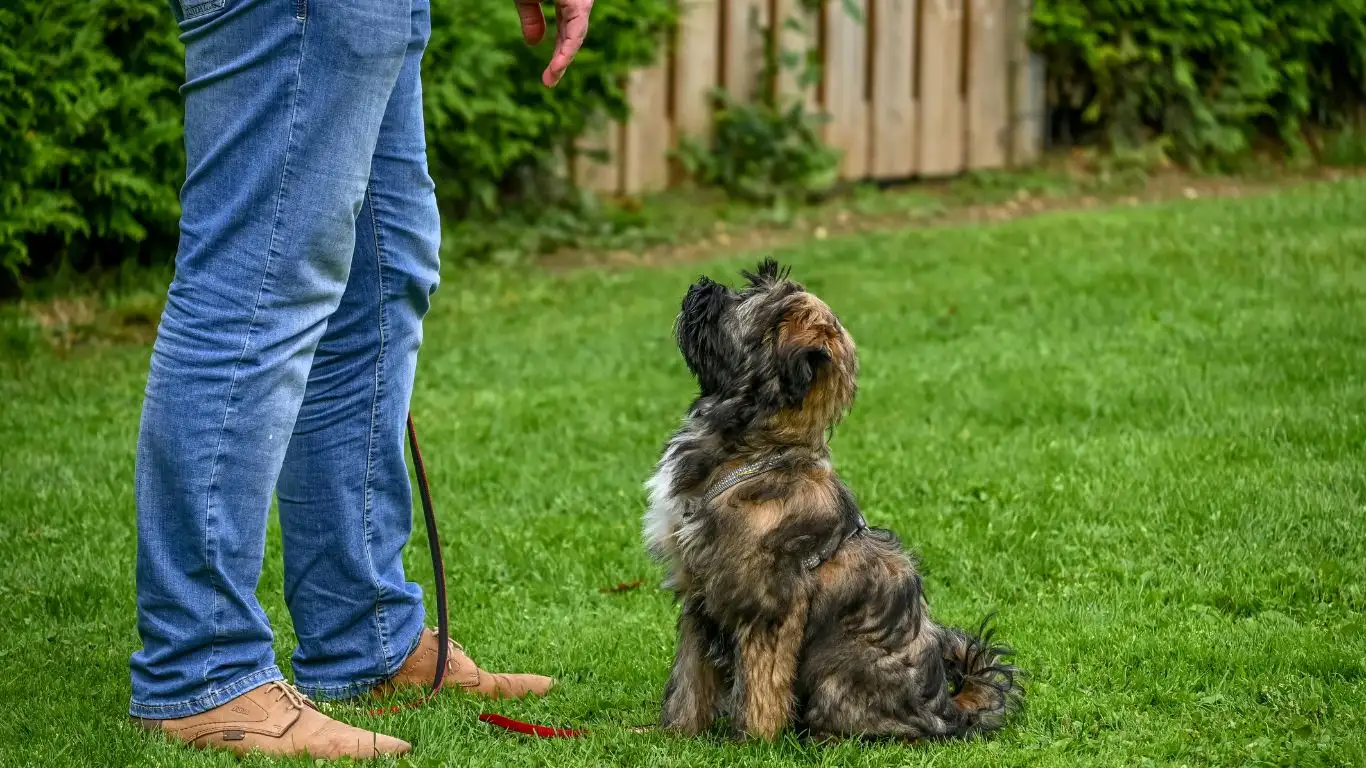
If your dog is following you around out of boredom or a need for attention, enrichment activities can be a game-changer. Enrichment activities are tasks or exercises that engage your dog mentally and physically. These are great for redirecting their focus and providing them with something to do besides shadowing you around the house.
Some effective enrichment ideas include:
- Interactive Toys: Toys that dispense treats or require problem-solving can keep your dog’s mind occupied for hours. Puzzle toys are fantastic for stimulating their cognitive abilities, which makes them less likely to follow you out of boredom.
- Training Games: Turn training sessions into games! Try hide-and-seek with treats, where you hide a treat in a different room and encourage your dog to find it. This keeps them engaged and focused on something other than following you.
- Long Walks or Hikes: Taking your dog on a long walk or a nature hike can burn off excess energy and make them more content to relax once you’re home. Physical activity is essential for reducing anxiety and restlessness, which are often at the root of the following behavior.
- Chew Toys: Sometimes, your dog just needs a good chew to unwind. Provide a selection of high-quality chew toys to keep their mouth busy and their attention off you.
When you provide enrichment, your dog is not only physically tired but also mentally fulfilled. This leads to a happier, more well-rounded dog that is less likely to cling to you for entertainment. I had a client, Rachel, whose rescue dog, Bailey, followed her around constantly. After introducing some mental stimulation activities, like interactive puzzle toys and scent work, Bailey’s obsession with following Rachel decreased significantly. It was a huge win for both of them!
5. Set Boundaries and Be Consistent
When you’re training your dog to stop following you around, one of the most important things to remember is to set boundaries and be consistent with your rules. You need to clearly communicate what is expected of your dog, and that means never giving in when they start following you. Every time they attempt to follow you, redirect them to another activity or command, like “Stay” or “Go to your spot.”
Setting boundaries can also mean teaching your dog that certain areas of the house are off-limits unless invited. For instance, if you don’t want your dog to follow you into the kitchen or the bathroom, make it a rule that they must stay outside those rooms unless given permission. It might take some time for your dog to adjust, but with consistency, they’ll learn the boundaries and feel secure in them.
A good example comes from one of my students, Tom, who had a border collie named Max. Max would follow Tom everywhere, even into the kitchen when Tom was cooking. Instead of allowing Max to stay in the kitchen, Tom began using the “Go to your spot” command whenever he entered the kitchen. At first, Max resisted, but over time, he got used to the boundary and learned to stay in his designated spot. It took a few weeks of consistent training, but eventually, Max was able to relax while Tom cooked without feeling the need to follow him around.
How Boundaries Strengthen the Bond with Your Dog
You might think that setting boundaries might harm the bond with your dog, but it actually strengthens it. Dogs need structure and clarity in their lives. By setting clear limits, you help your dog feel more secure in their role in your home. They’ll know what’s expected of them and feel more confident as a result. This doesn’t mean you’re being harsh with them—it just means you’re providing a predictable environment that helps them thrive.
6. Reinforce Positive Behavior with Calm Interactions
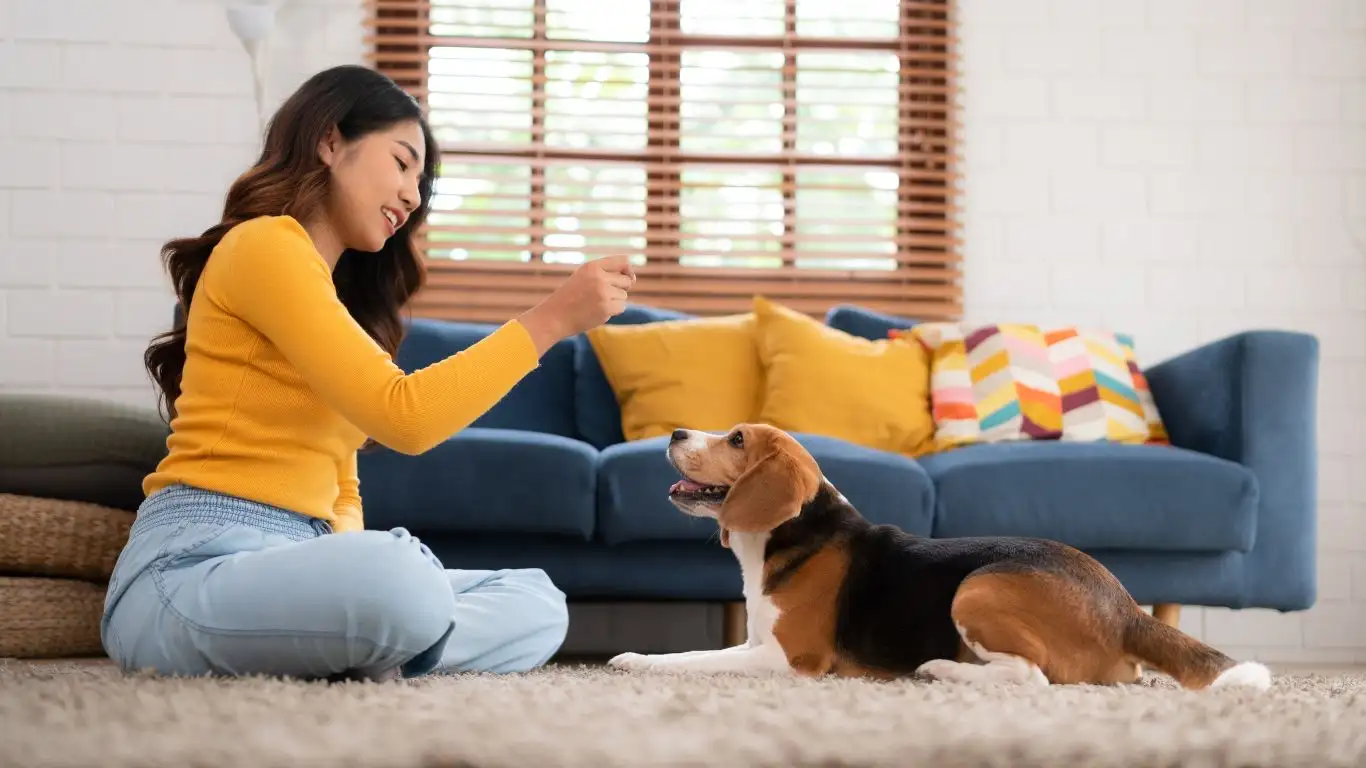
As you’re working with your dog to stop them from following you around, remember that reinforcing positive behavior is just as important as correcting unwanted behavior. One of the most effective ways to do this is through calm, non-excitable interactions. I’ve seen firsthand how dogs respond to their owners’ energy, and if you get too excited or anxious during training, your dog might mirror those emotions.
When you reward your dog for staying in place or following a command like “Stay” or “Go to your spot,” keep your praise calm and composed. Avoid showering them with over-the-top attention, as this can inadvertently encourage your dog to seek attention from you more frequently. A gentle “good boy” or a soft pet on the head after they successfully follow the command will suffice. This helps your dog understand that staying put is rewarded in a low-stress, calm way.
I’ve worked with several clients who noticed a big difference in their dog’s behavior when they started practicing calm praise. Take Karen, for example. She had a labrador retriever named Juno who had a tendency to follow her all over the house. Once Karen started reinforcing Juno’s good behavior with calm praise and treats, Juno became more relaxed, and her following behavior started to decrease. It was a simple shift, but it worked wonders!
7. Manage Separation Anxiety with Gradual Training
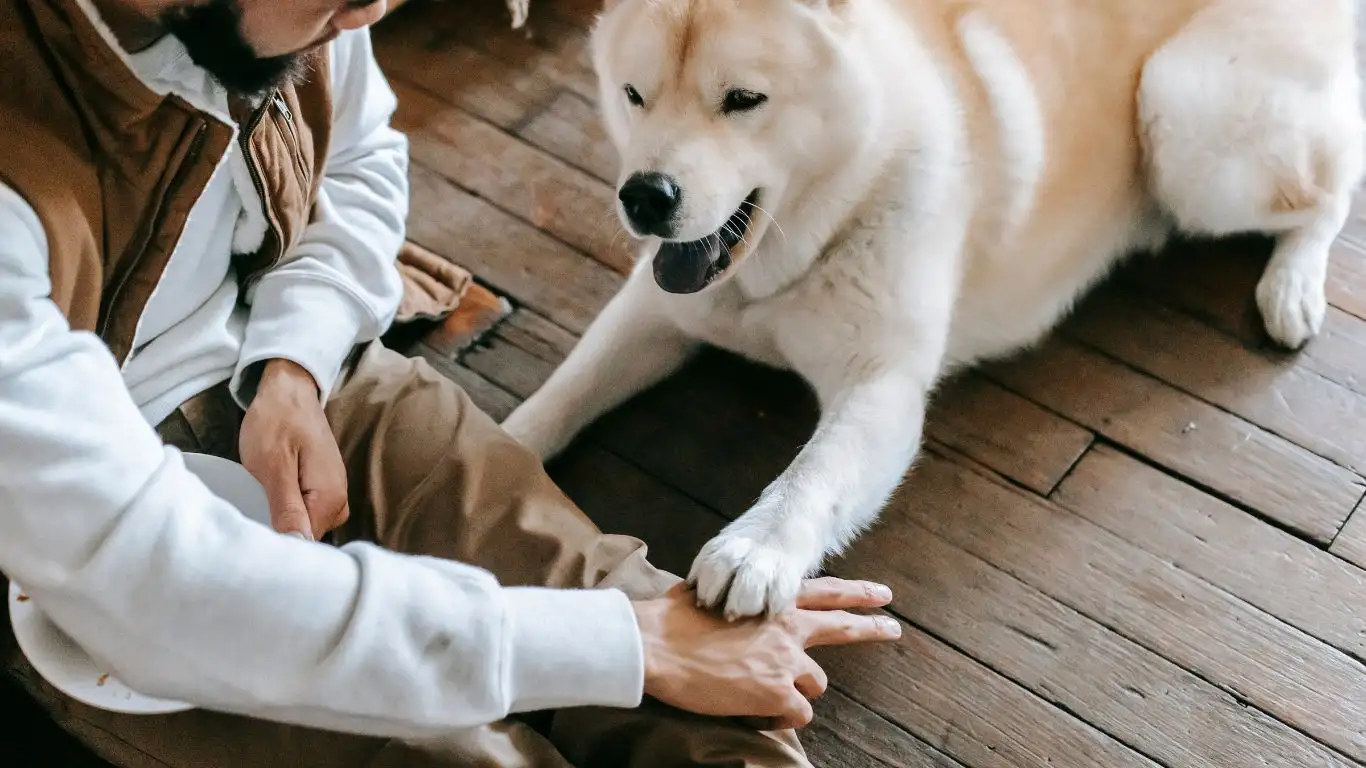
If you suspect that your dog’s constant following is due to separation anxiety, it’s important to address the root cause of the behavior. Separation anxiety occurs when a dog becomes distressed when separated from their owner. This often leads to excessive following, barking, destructive behavior, and even house soiling. While it can be challenging, with patience and the right approach, you can help your dog feel more secure when you’re not around.
One way to manage separation anxiety is by gradually increasing the time your dog spends alone. Start by leaving your dog in a room with their favorite toys or a comfy bed, and step out of the room for a few seconds at first. Slowly increase the amount of time you’re away, ensuring that your dog remains calm. If they start to panic, return to the room calmly, and try again later, gradually increasing the duration of your absences.
For example, when I worked with a client named Joe and his pug, Benny, we used this method. Benny would follow Joe everywhere, especially when Joe prepared to leave the house. Joe started with small steps, like walking into the next room and coming back after a minute. Slowly, Benny learned that when Joe left, he would always come back, and the anxiety around his departures reduced over time.
Another technique that worked wonders for Joe and Benny was the “departure cue” method. Joe would always give Benny a consistent signal before leaving, like grabbing his keys and putting on his shoes, followed by a calm “see you later.” This routine helped Benny predict when Joe was leaving, which helped reduce the stress he felt during those times.
8. Consider Professional Training for More Challenging Cases
If your dog’s behavior is proving particularly difficult to manage despite consistent training, it might be worth consulting a professional dog trainer. A qualified trainer can assess your dog’s behavior in-person and offer tailored solutions based on your dog’s specific needs. In some cases, a professional might recommend behavioral modification techniques or a more intensive training program.
Many trainers, myself included, use positive reinforcement as the foundation for any training program. But sometimes, a more personalized approach is needed to address deeply ingrained behaviors. When I first started training dogs, I found that some dogs needed extra support to cope with their anxiety or behavioral issues. For instance, a highly energetic border collie I worked with required more exercise and mental stimulation than what was initially planned. Once I adjusted the training plan to incorporate more physical activity and mental challenges, the dog’s behavior improved significantly.
If you’re considering professional help, make sure the trainer you choose aligns with your training philosophy. Look for one who uses positive reinforcement techniques rather than punishment-based methods. This will ensure that your dog is treated kindly and effectively throughout the training process.
9. Prevention is Key: Avoid Reinforcing Following Behavior
One of the most important things to keep in mind when trying to train your dog to stop following you is to avoid reinforcing the behavior. This is where consistency plays a huge role. Every time your dog follows you and you give them attention or affection, you’re reinforcing the idea that following you leads to a reward. Even though it might feel good to get a cuddle or a wagging tail, it’s important to be aware of how your actions are shaping your dog’s behavior.
If you’re working on breaking this behavior, try to be mindful of when you give attention to your dog. When they follow you, don’t offer treats, pats, or attention. Instead, redirect their focus to a toy or a task they can do on their own. If they go to their spot or stay in one area, reward them with a calm, positive interaction.
By not rewarding your dog when they follow you, they’ll eventually learn that following you doesn’t yield any special rewards. Over time, this will help reduce the behavior, and your dog will start to feel more independent.
References
Disclaimer
While this article provides general guidance on dog behavior training, it’s important to remember that each dog is unique. Behavioral training should be approached with patience, consistency, and understanding. If your dog’s following behavior persists or worsens, it may be helpful to consult a professional trainer or a veterinarian to rule out any underlying health or behavioral issues.
